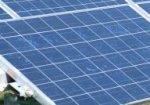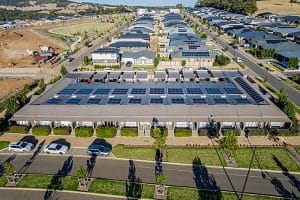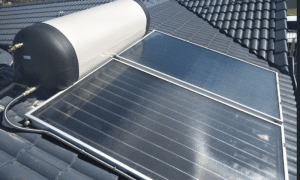A researcher at the University of Houston (UH) has developed a special coating for solar panel glass that enhances its self cleaning properties and assists in keeping solar modules operating at their peak efficiency.
Developed by physics professor Seamus “Shay” Curran, director of UH’s Institute for NanoEnergy, the Self-Cleaning Nano Hydrophobic (SCNH107TM) layer repels water and particles without interfering with the solar panel’s ability to absorb sunlight.
The coating lasts for years, further reducing the already minimal maintenance required.
“A dirty solar panel can reduce its power capabilities by up to 30 percent,” Curran said. “The coating essentially makes the panel self-cleaning.”
While designed for use on solar modules, the Professor believes the material could also have widespread applications as an anti-corrosive coating for other materials.
The technology has been licensed by C-Voltaics; a company focused on reducing costs associated with solar energy system servicing and maintenance; which can be significant issues for large scale solar farms.
The Self-Cleaning Nano Hydrophobic material has been tested successfully at the Dublin Institute for Technology and will now undergo field trials being run by an engineering firm in North Carolina.
The coating was developed conjunction with Professor Curran’s work on mobile, off-grid solar-powered generators for residential and commercial use. His Storm Cell unit consists of a trailer with solar panels attached to retractable arms that can be manually unfurled as needed and then stored inside the unit. Storm Cell offers enough power for an air-conditioning system, some lights and a TV.
Professor Curran has worked extensively in solar research. In 2010, the University of Houston received a $1.2 million grant from the Office of Naval Research to improving the efficiency of thin-film solar cells; a project led by Professor Curran.
The Institute for NanoEnergy (INE) was set up in recognition of the challenges posed by increased emphasis on energy security.







































